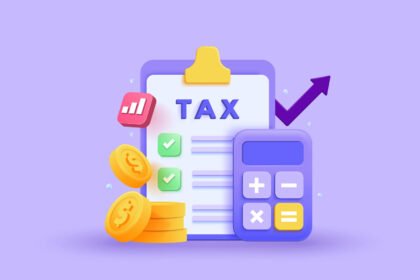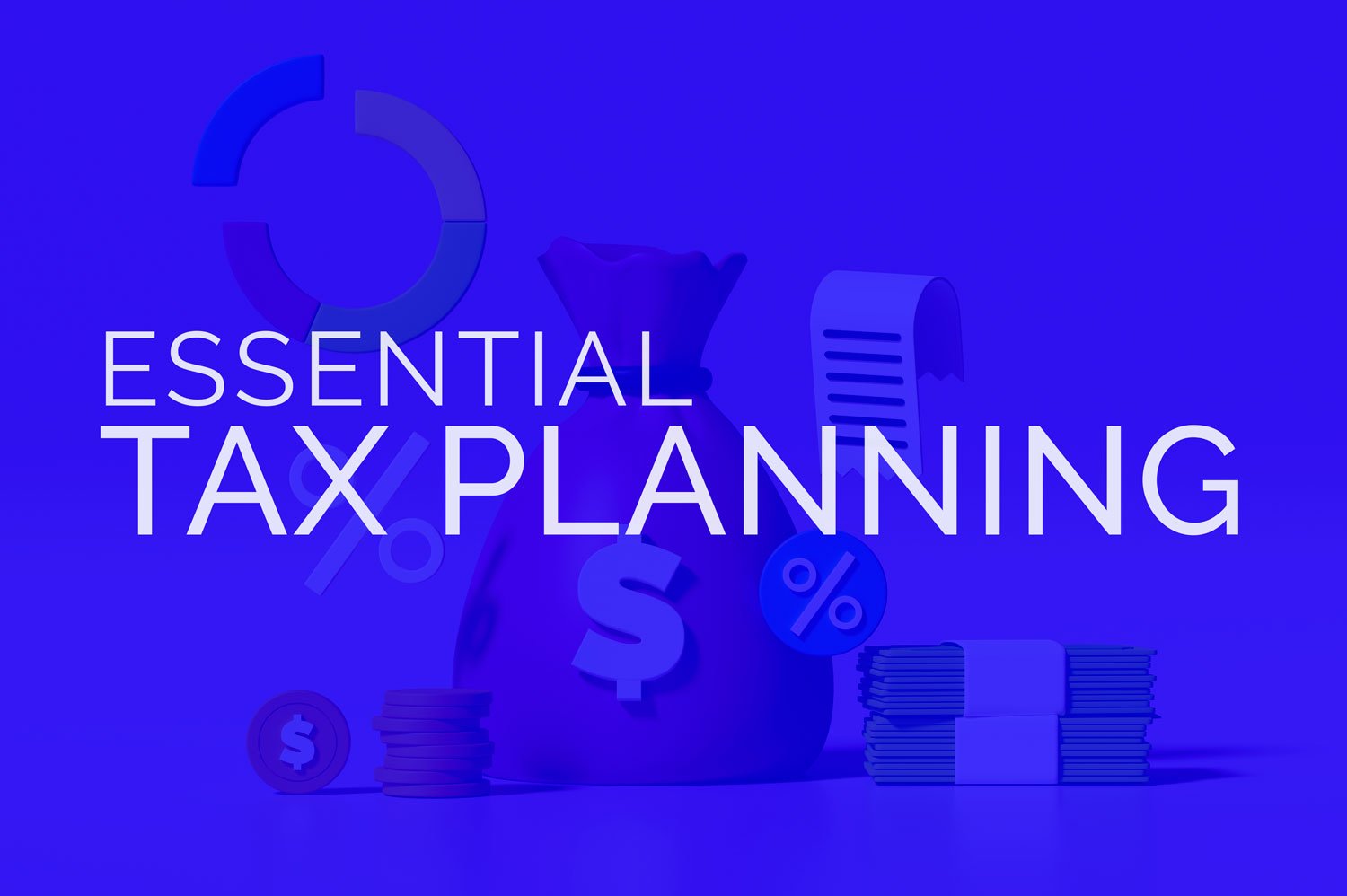Tax planning is a critical aspect of managing your finances effectively. It involves analyzing your financial situation to minimize your tax liability legally and efficiently. The essence of tax planning lies in understanding your income, expenses, and overall financial goals to make informed decisions that can reduce your taxes. It’s not just about paying less but also about optimizing the timing of your financial decisions to achieve maximum tax efficiency.
Proactive tax planning can make a significant difference in your financial well-being. By planning ahead, you can anticipate potential tax obligations and adjust your financial strategies accordingly. This foresight helps in avoiding unexpected tax burdens and ensures that you are making the most out of available deductions, credits, and other tax-saving opportunities.
In this article, we’ll explore the key elements of tax planning. We’ll begin by understanding your current tax situation, move on to discussing both short-term and long-term tax planning strategies, and then highlight common tax planning mistakes. Finally, we’ll explore how a financial planner can assist you in navigating the complexities of tax planning.
Table of Contents
Understanding Your Tax Situation
Before you can effectively plan your taxes, it’s essential to understand your current tax situation. This involves determining your tax filing status, identifying your sources of income and deductions, and analyzing your tax bracket and effective tax rate.

Determine Your Tax Filing Status
Your tax filing status significantly impacts your tax liability. The IRS recognizes several filing statuses, including single, married filing jointly, married filing separately, head of household, and qualifying widow(er). Each status has its own tax brackets and eligibility for certain deductions and credits.
Choosing the correct filing status can save you money and maximize your tax benefits. For instance, if you qualify for head of household status, you’ll enjoy a higher standard deduction and lower tax rates compared to filing as single.
Identify Income Sources and Deductions
Understanding where your income comes from and what deductions you’re eligible for is the cornerstone of tax planning. Income can come from various sources, including wages, business income, investments, rental income, and more. Each type of income may be taxed differently, so it’s crucial to understand the tax implications of each.
Deductions, on the other hand, reduce your taxable income. Common deductions include those for mortgage interest, student loan interest, charitable contributions, and medical expenses. Maximizing your deductions is a key strategy in reducing your overall tax liability.
Analyze Your Tax Bracket and Effective Tax Rate
Your tax bracket determines the percentage of tax you pay on your income, while your effective tax rate gives you a better idea of your overall tax burden. Knowing your tax bracket helps you make informed decisions about income timing, investment strategies, and retirement planning.
Your effective tax rate, which is your total tax paid as a percentage of your total income, provides insight into your tax efficiency. By analyzing this, you can identify areas where you might be paying more taxes than necessary and adjust your strategies accordingly.
Short-Term Tax Planning Strategies
Short-term tax planning focuses on strategies that you can implement within the current tax year to reduce your tax liability. These strategies include timing your income and expenses, maximizing deductions and credits, tax-loss harvesting, contributing to retirement accounts, and utilizing tax-advantaged savings accounts.
Timing of Income and Expenses
The timing of your income and expenses can significantly impact your tax liability for the year. By deferring income to the next year or accelerating expenses into the current year, you can lower your taxable income.
For example, if you expect to be in a lower tax bracket next year, you might defer a bonus or delay invoicing clients until the new year. Conversely, if you anticipate being in a higher tax bracket, you might accelerate income or push deductions into the current year to take advantage of the lower tax rate.
Maximizing Deductions and Credits
Deductions and credits are powerful tools for reducing your tax liability. Deductions lower your taxable income, while credits directly reduce the amount of tax you owe. Understanding the difference between the two and how to maximize each is crucial in tax planning.
Some deductions are available only if you itemize, while others are available even if you take the standard deduction. It’s important to review all possible deductions and credits to ensure you’re not leaving money on the table. Common deductions include mortgage interest, state and local taxes, and charitable contributions. Credits can include those for education expenses, child care, and energy-efficient home improvements.
Tax-Loss Harvesting
Tax-loss harvesting is a strategy that involves selling investments at a loss to offset gains from other investments. This strategy can reduce your taxable income, especially if you have significant capital gains in a given year.
By carefully timing the sale of losing investments, you can minimize your tax liability while still maintaining your overall investment strategy. This tactic is particularly useful for investors in high tax brackets who have realized significant gains.
Retirement Account Contributions
Contributing to retirement accounts such as a 401(k), IRA, or Roth IRA is a cornerstone of tax planning. Contributions to traditional 401(k) and IRA accounts are typically tax-deductible, reducing your taxable income for the year. This allows you to save for retirement while also lowering your tax bill.
Roth IRA contributions, while not tax-deductible, offer tax-free growth and withdrawals in retirement. Balancing contributions between traditional and Roth accounts can help you manage your tax liability both now and in the future.
Tax-Advantaged Savings Accounts (HSAs, FSAs)
Health Savings Accounts (HSAs) and Flexible Spending Accounts (FSAs) offer unique tax advantages that can help you save on medical expenses. Contributions to these accounts are tax-deductible, and withdrawals for qualified medical expenses are tax-free.
HSAs are particularly advantageous because they offer triple tax benefits: contributions are tax-deductible, earnings grow tax-free, and withdrawals for qualified expenses are also tax-free. FSAs offer similar benefits, but the funds must be used within the plan year, making timing crucial.
Long-Term Tax Planning Strategies
Long-term tax planning focuses on strategies that extend beyond the current tax year and aim to achieve sustainable tax efficiency over time. These strategies include estate planning, retirement income planning, tax-efficient investment strategies, and charitable giving.
Estate Planning and Tax Implications
Estate planning is an essential component of long-term tax planning, especially for individuals with significant assets. Proper estate planning can help minimize estate taxes and ensure that your wealth is transferred to your heirs in the most tax-efficient manner possible.
Key strategies include setting up trusts, making annual gifts to reduce the size of your estate, and utilizing the lifetime estate tax exemption. By planning ahead, you can reduce the tax burden on your heirs and preserve more of your estate for future generations.
Retirement Income Planning
Planning for retirement involves more than just saving money; it also requires careful consideration of how you’ll withdraw your funds in a tax-efficient manner. Different retirement accounts have different tax implications, so it’s important to plan your withdrawals strategically.
For instance, withdrawals from traditional 401(k) and IRA accounts are taxed as ordinary income, while Roth IRA withdrawals are tax-free. By balancing withdrawals between these accounts, you can manage your tax liability in retirement. Additionally, delaying Social Security benefits can increase your monthly payout and potentially reduce your tax liability.
Tax-Efficient Investment Strategies
Investing with tax efficiency in mind can significantly reduce your tax liability over time. This involves selecting investments that are taxed at lower rates or not at all, such as municipal bonds, which are often exempt from federal taxes.
Another strategy is to hold investments for longer periods to take advantage of lower long-term capital gains tax rates. Additionally, placing tax-inefficient investments, like bonds, in tax-advantaged accounts can help you minimize your tax liability.
Charitable Giving Strategies
Charitable giving can provide significant tax benefits if done strategically. Donating appreciated assets, such as stocks or real estate, allows you to avoid capital gains taxes while still receiving a charitable deduction.
Another strategy is to use a donor-advised fund, which allows you to make a charitable contribution, receive an immediate tax deduction, and then recommend grants from the fund over time. This approach can be particularly beneficial in high-income years, allowing you to maximize your charitable impact while minimizing your tax liability.
Common Tax Planning Mistakes
Even with careful planning, it’s easy to make mistakes that can cost you money. By being aware of these common tax planning pitfalls, you can take steps to avoid them and ensure that your tax strategy is as effective as possible.

Overlooking Deductions and Credits
One of the most common mistakes in tax planning is overlooking available deductions and credits. This can happen if you’re not fully aware of all the deductions and credits for which you qualify or if you fail to keep accurate records throughout the year.
To avoid this mistake, it’s important to stay organized and keep track of all potential deductions and credits. Regularly reviewing your finances and working with a tax professional can help ensure you’re not missing out on valuable tax-saving opportunities.
Ignoring Tax Implications of Life Events
Major life events, such as getting married, having a child, buying a home, or changing jobs, can have significant tax implications. Failing to account for these changes in your tax planning can lead to unexpected tax liabilities.
For example, getting married can change your filing status and potentially your tax bracket. Similarly, having a child can make you eligible for credits such as the Child Tax Credit or the Earned Income Tax Credit. It’s important to review your tax situation after any major life event and adjust your strategy accordingly.
Failing to Diversify Investments
Investment diversification is not just about managing risk; it’s also about tax efficiency. Failing to diversify your investments can lead to a higher tax liability, especially if all your assets are in taxable accounts.
By diversifying your investments across different asset classes and account types, you can manage your tax liability more effectively. For example, holding a mix of taxable and tax-advantaged accounts can give you more flexibility in managing your taxes.
Not Seeking Professional Advice
Tax laws are complex and constantly changing, making it difficult to stay up-to-date on the latest tax-saving strategies. Failing to seek professional advice can lead to missed opportunities and costly mistakes.
Working with a tax professional or financial planner can help ensure that your tax planning strategy is comprehensive and up-to-date. These professionals can provide valuable insights and help you navigate the complexities of tax planning.
The Role of a Financial Planner
A financial planner can play a crucial role in helping you achieve your tax planning goals. These professionals have the expertise to analyze your financial situation, identify tax-saving opportunities, and develop a comprehensive plan that aligns with your long-term goals.
How a Financial Planner Can Assist with Tax Planning
Financial planners can assist with tax planning in several ways. They can help you identify deductions and credits you might have overlooked, develop strategies to minimize your tax liability, and ensure that your investment strategy is tax-efficient.
Additionally, financial planners can provide guidance on complex tax issues, such as estate planning, retirement planning, and charitable giving. They can also help you navigate major life events and ensure that your tax strategy is aligned with your overall financial plan.
Benefits of Comprehensive Financial Planning
Comprehensive financial planning goes beyond tax planning to address all aspects of your financial life, including budgeting, saving, investing, retirement planning, and estate planning. By taking a holistic approach, financial planners can help you achieve greater financial security and peace of mind.
Working with a financial planner ensures that all aspects of your financial life are coordinated and working together. This can lead to better decision-making, improved tax efficiency, and a stronger financial foundation.
In Conclusion
Tax planning is an essential component of financial management that can significantly impact your overall financial well-being. By understanding your tax situation, implementing both short-term and long-term tax planning strategies, and avoiding common tax planning mistakes, you can minimize your tax liability and maximize your financial security.
The key elements of tax planning include understanding your tax situation, maximizing deductions and credits, timing income and expenses, and employing tax-efficient investment strategies. It’s also important to consider the tax implications of life events and to seek professional advice when needed.
Ongoing tax planning is crucial because tax laws and your financial situation can change over time. By regularly reviewing and updating your tax strategy, you can ensure that you’re making the most of available tax-saving opportunities.
If you’re unsure about how to navigate the complexities of tax planning, consider consulting with a financial planner. These professionals can provide valuable insights and help you develop a comprehensive plan that aligns with your financial goals.
Take Action!
If you’re ready to take control of your financial future, consider scheduling a free consultation with one of our experienced financial planners. We’ll help you assess your current tax situation, identify opportunities for tax savings, and develop a comprehensive financial plan tailored to your needs.
Contact us today to schedule your free consultation and start planning for a more secure financial future. Don’t forget to share this article with your friends and family, and help them take advantage of these valuable tax planning tips!


